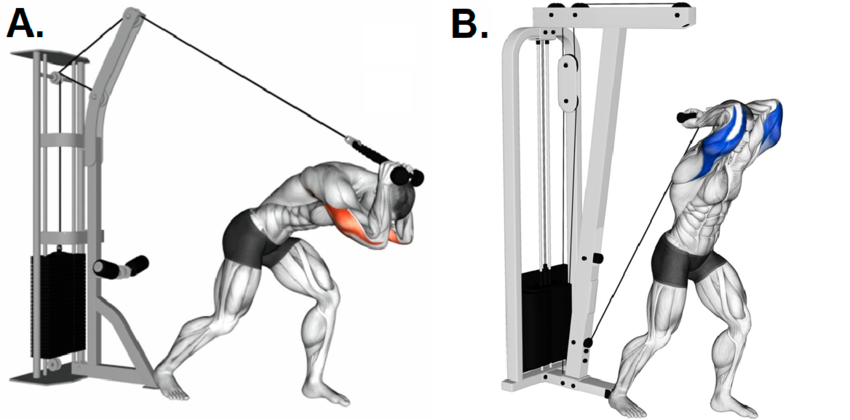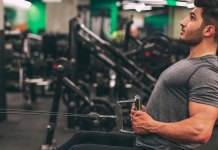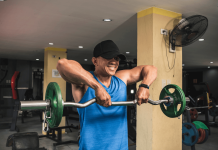Mastering the Cable Overhead Tricep Extension: A Comprehensive Guide
The cable overhead tricep extension is a powerful exercise that can help you achieve stronger and more defined triceps. Whether you’re new to this exercise or looking to refine your technique, this comprehensive guide will provide you with all the information you need to master it. Let’s dive in!
Benefits of Cable Overhead Tricep Extension:
When it comes to sculpting impressive triceps, the cable overhead tricep extension is a game-changer. Here are some key benefits you can expect:
a. Enhanced Muscle Definition: Cable overhead tricep extensions target the triceps’ long head, helping to carve out that coveted horseshoe shape.
b. Increased Tricep Strength: This exercise allows for a full range of motion, promoting greater tricep strength and muscle engagement.
c. Improved Overall Upper Body Strength: Strengthening the triceps also contributes to better performance in other upper body exercises.
d. Versatility in Workouts: You can incorporate cable overhead tricep extensions into various workout routines, from full-body workouts to dedicated tricep-focused days.
e. Muscle Endurance: High-repetition sets can improve tricep endurance, which is beneficial for athletes and fitness enthusiasts.
Now that you understand the advantages, let’s move on to perfecting your form and technique.

Proper Form and Technique:
Getting the form right is essential to maximize the effectiveness of cable overhead tricep extensions and minimize the risk of injury. Follow these steps for proper form:
a. Setup: Stand facing the cable machine, feet shoulder-width apart, and grasp the rope attachment with an overhand grip.
b. Posture: Maintain an upright stance with your chest up and core engaged. This helps stabilize your body during the exercise.
c. Arm Position: Begin with your arms fully extended overhead. Keep your elbows close to your ears throughout the movement.
d. The Movement: Lower the rope attachment behind your head by bending at the elbows. Your forearms should be parallel to the floor.
e. Full Extension: Extend your arms fully, returning to the starting position. This completes one repetition.
Remember to use a weight that challenges your triceps without compromising your form. It’s better to start with lighter weight and focus on perfecting your technique.
Common Mistakes to Avoid:
Even with the best intentions, it’s easy to make mistakes when performing cable overhead tricep extensions. Here are some common errors to steer clear of:
a. Overarching the Back: Arching your back excessively can strain your lower back. Maintain a stable, upright posture throughout the exercise.
b. Using Excessive Weight: Lifting too heavy can lead to improper form and potential injury. Choose a weight that allows you to complete your reps with good technique.
c. Incomplete Range of Motion: Ensure you lower the rope attachment behind your head fully and extend your arms completely to engage the triceps fully.
d. Neglecting Warm-Up: Warm up your triceps and shoulders before performing cable overhead tricep extensions to prevent strains or pulls.
Cable Overhead Tricep Extension Variations:
Variety is essential to keep your workouts exciting and to challenge your muscles in different ways. Here are some variations of the cable overhead tricep extension:
a. Single-Arm Cable Overhead Tricep Extension: Instead of using both arms simultaneously, perform the exercise one arm at a time. This can help address muscle imbalances and provide a different stimulus to your triceps.
b. Reverse Grip Cable Overhead Tricep Extension: Change your grip to an underhand position, emphasizing the lateral head of the triceps. This variation adds diversity to your routine.
c. Using Different Attachments: Experiment with various attachments like a straight bar, V-bar, or rope handle. Different attachments can alter the angle and grip, targeting your triceps from multiple angles.
d. Seated Cable Overhead Tricep Extension: Perform the exercise while seated on a bench or chair. This variation stabilizes your body and allows for focused tricep engagement.
Equipment and Setup:
Before diving into cable overhead tricep extensions, it’s essential to understand the equipment and setup:
a. Cable Machine: This exercise requires a cable machine with adjustable weight stacks or a cable stack machine.
b. Attachment Options: Most cable machines offer various attachments such as ropes, straight bars, and V-bars. Choose the attachment that suits your comfort and goals.
c. Weight Selection: Start with a weight that allows you to perform 3 sets of 10-12 repetitions with proper form. You can adjust the weight as you progress.
d. Adjustable Bench: For seated variations, you may need an adjustable bench or chair.
Ensure the cable machine is set at the appropriate height for your exercise.
Safety and Injury Prevention:
Safety should always be a priority in your fitness routine. Here are some safety tips for cable overhead tricep extensions:
a. Warm-Up: Begin with a brief warm-up that includes dynamic stretching for the triceps and shoulders. Warming up reduces the risk of strains and injuries.
b. Start with Light Weight: Especially if you’re new to this exercise, begin with a light weight to practice proper form before increasing the load.
c. Proper Breathing: Exhale as you extend your arms and inhale during the eccentric (lowering) phase of the movement. This helps stabilize your core and maintain control.
d. Controlled Movement: Avoid jerky or uncontrolled movements. Maintain a smooth and controlled motion throughout the exercise.
e. Listen to Your Body: If you experience pain or discomfort during the exercise, stop immediately and assess your form. Consult a fitness professional if necessary.
Reps and Sets:
Determining the right number of repetitions (reps) and sets is crucial to tailor your workout to your specific goals. Here are some guidelines:
a. Muscle Endurance: To improve tricep endurance and muscular stamina, aim for 3 sets of 15-20 reps with a lighter weight.
b. Muscle Building: If your goal is to build tricep muscle size, target 3-4 sets of 8-12 reps with a moderate weight.
c. Strength Gains: For maximum tricep strength gains, opt for 4-5 sets of 6-8 reps with a challenging weight.
d. Rest Between Sets: Allow 1-2 minutes of rest between sets to ensure adequate recovery.
Remember that these are general guidelines, and you should adjust based on your fitness level and individual goals.
Incorporating Cable Overhead Tricep Extension into Workouts:
To maximize the benefits of cable overhead tricep extensions, consider how to incorporate them into your workout routine:
a. Full-Body Workouts: Include this exercise in full-body workouts to engage multiple muscle groups for a comprehensive training session.
b. Tricep-Focused Days: Designate a specific day for tricep training, featuring exercises like cable overhead tricep extensions, dips, and skull crushers.
c. Supersetting: Pair this exercise with other tricep movements or antagonist muscle groups for a challenging superset routine.
d. Progress Tracking: Keep a workout log to track your progress and adjust weights and reps accordingly.
Integrating cable overhead tricep extensions strategically can lead to enhanced upper body strength and muscle development.
Real-Life Success Stories:
Real-life success stories can be inspiring and motivating. Here are a couple of testimonials from individuals who have benefited from including cable overhead tricep extensions in their routines:
a. John’s Transformation: “After consistently doing cable overhead tricep extensions, my triceps transformed. They’re more defined and stronger than ever. This exercise is now a staple in my workouts.”
b. Maria’s Upper Body Strength: “As a competitive athlete, upper body strength is crucial. Cable overhead tricep extensions have significantly improved my tricep strength, giving me an edge in my sport.”
These real-life examples showcase the positive impact this exercise can have on your triceps and overall performance.




